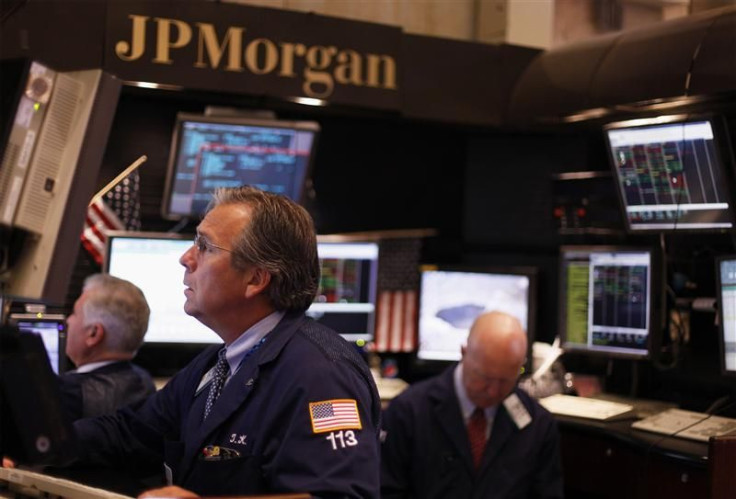How Did JPMorgan Lose Billions In One Trade? London 'Whale' Explained

The now-notorious JP Morgan Chase and Company (NYSE: JPM) trading activity the bank says will cost it upwards of $3 billion has yet to be detailed, but analyzing earlier reports of unusual activity by a JP Morgan unit the past few weeks helps bring the sequence of events that led to the huge loss into focus.
It all seemed to start in early April. Hedge fund players in the opaque market for synthetic credit-default swap instruments (CDS) complained to the Wall Street Journal and Bloomberg News that a trader at JP Morgan's U.K. office was distorting the market with his massive bets.
The people who spoke to the media had no trouble identifying who the trader was -- the market for synthetic CDS instruments is not very liquid, still mainly traded on a person-to-person basis -- and pointed to an until-then anonymous Frenchman named Bruno Iksil as the force behind the bets.
Here's what the hedge fund players said was going on: Iksil was making a positive bet on the CDS market through a round-about route, selling insurance against default on a basket of North American investment-grade corporate bonds. In other words, Iskil was betting that the price of corporate bonds would rise.
His activity was noticed because he was not actually selling insurance on each specific item in the basket, but funneling his cash through an instrument linked to the Markit CDX.IG.NA Index, a benchmark measure of the credit-default swap market.
On their own, those trades would have indicated Iksil was making a bullish bet on the corporate bond market since the price of insurance against default moves in the opposite direction to the value of corporate bonds. Iskil could have bought back that protection and pocketed the profit, if the bond market rallied. His bet was hedged, meaning there was a counterbalancing opposite trade that was supposed to soften the blow if the market moved against him.
That hedging consisted of buying -- instead of selling -- protection for bonds of some financial institutions that themselves underlie the CDX.IG.NA Index.
JP Morgan insisted the trade was not a directional bet hoping the market would go one way or the other, but a way of protecting the bank against other outstanding bets made on behalf of clients and noted elsewhere on its balance sheet.
Others speculated the move could be a bet not necessarily meant to rely on movements within the corporate bond market, but more linked to interest rate changes. At least one bank analyst also suggested the whole charade was just a way for JPMorgan to smooth out counter-cyclical accounting losses it would be forced to report if the financial markets continued to recover into 2012.
But regardless of what JP Morgan or others said, it was clear the bank stood to make a profit on the spread between instruments linked to the CDX Index and the index itself -- a spread the activities of the bank itself created.
And that made the market mad. Traders began pejoratively referring to Iskil as the London Whale and Voldemort and lampooning his strategy on the front pages of the financial media.
Then the market got even. Traders began to take positions that assumed Iskil's trade would unravel -- and in the circular logic that sometimes pervades asset markets -- precipated that outcome. The spread JP Morgan was depending on to make a profit evaporated.
I view the entire market as a chess match playing against this guy, an unnamed trader told the Wall Street Journal on April 10.
JPMorgan had been backed into a classic zugzwang -- in which the best move is no move -- and stopped purusing its trading strategy. It could have probably weathered the storm, which it dismissed as a complete tempest in a teapot, had it found willing counter-parties to keep doing a lesser-volume version of the trade. But by then it was too late. Iksil's positions collapsed when he was unable to find counter-parties to its massive bets.
Checkmate came on Thursday, to the tune of perhaps $3 billion.
© Copyright IBTimes 2025. All rights reserved.





















